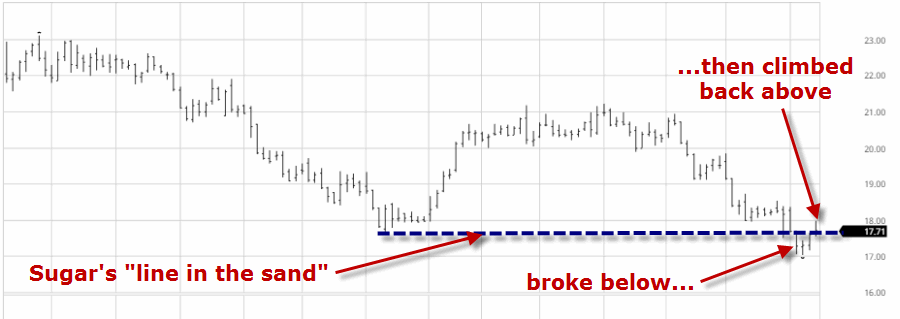In this article I highlighted a variety of “potential opportunities” that may or may not have been setting up. Two of those involved soybeans and sugar. But the potential setups forming for these two markets appear to have dissipated – at least for the moment.
Soybeans
Soybeans have a seasonal tendency to rally between late winter and mid-to-late spring (see here and here regarding the same setup in 2016). However, May futures contract broke decisively through the price the 991 level that I was looking at as a potential support level. Figure 1 – May Soybeans break support (www.Barcharts.com)
Figure 1 – May Soybeans break support (www.Barcharts.com)
Do not be surprised if beans find support somewhere above the 954 support level and do not be surprised if they end up rallying between now and early June. But for now the setup that appeared to be forming is kaput.
Sugar
As I wrote about here, sugar has a tendency to show weakness between early March and mid-April. As I wrote about in the original post, sugar futures appeared to be breaking down below the 17.66 support level. I also mentioned however, that if sugar reversed back above that support level, then all bets are off. As you can see in Figure 2, July sugar futures are back above that level. Figure 2 – Sugar breakdown fails to follow through (www.Barcharts.com)
Figure 2 – Sugar breakdown fails to follow through (www.Barcharts.com)
Sugar may still break down. But for now – as with beans – the initial idea did not follow through. So a trader looking to trade the short side of sugar should keep a close eye to see if another breakdown unfolds.
Jay Kaeppel
Disclaimer: The data presented herein were obtained from various third-party sources. While I believe the data to be reliable, no representation is made as to, and no responsibility, warranty or liability is accepted for the accuracy or completeness of such information. The information, opinions and ideas expressed herein are for informational and educational purposes only and do not constitute and should not be construed as investment advice, an advertisement or offering of investment advisory services, or an offer to sell or a solicitation to buy any security.



























